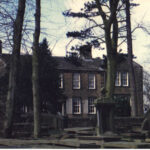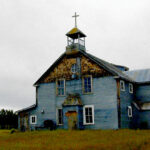Culture, Historical Essays
The Last of the Greatest Generation: Clarence E. “Bud” Anderson (1922-2024)
Clarence E. “Bud” Anderson, the last World War II triple ace flyer, died peacefully in his sleep at his home in Auburn, California, on May 17 at the age of 102. He had been the terror of the skies over Europe, the highest scoring flying ace in his P-51 Mustang squadron. He served two combat tours, was promoted to major in 1944 at the age of only 22, went on to become a test pilot, a fighter squadron and wing commander, and served in Korea and Vietnam. He retired in 1972 as a full colonel; in 2023, the Air Force gave him a post-retirement promotion to brigadier general.
Anderson’s death is a sad reminder that there are few left for whom the last World War is a memory rather than simply history; of the 16.4 million Americans who served in World War II, only 119,550 of them are still alive as of 2023. There are still a handful of D-Day veterans left—less than 1% of those who participated in one of the largest battles in human history—and a few of them are currently making their way back to Europe for the 80th anniversary of the day they stormed the beaches. Anderson was one of the pilots tasked with clearing the skies of the Luftwaffe in the leadup to Operation Overlord.
I once spent an hour chatting with Bud Anderson. He was 98 at the time, and told me in a gravelly, far-off voice that he was working as a junior aircraft mechanic at an air depot near Sacramento when the Japanese hit Pearl Harbor. They were informed by the foreman. “That’s when I knew we were off to war. I didn’t even know where Pearl Harbor was,” Anderson told me. Anderson enlisted with the U.S. Army as an aviation cadet, received his wings and commission as a second lieutenant in September, and ended up based in RAF Leiston, England.
Anderson started off flying combat missions against the Luftwaffe with the 365th Fighter Squadron of the 357th Fighter Group. “We had good pilots in our group,” he told me. “All we had to do was be turned loose, and we were going to chew somebody up. I was quite proud of our unit. That was one of the greatest times of my life, working with these guys.” Anderson was frank about the fact that he enjoyed himself. “It was very rewarding. It was scary when you first got over there; you looked down, and that’s enemy territory. If I go down, all these farmers are going to pitchfork me; they’re just waitin’. Once I got some experience, it kind of opened things up.”
“I wanted to do it,” Anderson told me with a chuckle. “You had to engage the enemy. There were a lot of fighter pilots who flew a whole tour and never saw an enemy airplane.” Anderson remembered his first kill vividly. He’d been “casing ‘em,” he said, and his squadron had been following the “18,000-foot rule—you drive the enemy away, and you come back. That was our instruction. I chased these guys down to 18,000 feet, fired a long burst, [and] came back. But on this mission, I was a leader, and on my way home. You had to fly with three, and another squadron pulled in behind us.”
We got about halfway out of Germany when there came three ME-109s. We were on the left side, and they were coming in from the right side. They obviously couldn’t see us because there were seven of us. I thought, One of these is mine. We cut ‘em off at the pass before they could do any attacking. I latched onto this guy. It was down low, where an ME-109 could give the Mustang a harder time. I just couldn’t get on this guy’s tail. I was coming at him at very steep angles, and I just couldn’t slide in behind him.
I had been through three gunnery schools, so I knew how to shoot. I said, when this guy comes around again—we’re both in a very high-speed turn—that means your wingtip is vertical—I’m going to get my stick site right on him, pull through him—this’ll mean I can’t see him because he’ll be under my nose. I’m going to pull through to my estimated lead, fire a burst, and see what happens. Sure enough, I hit him with a golden bullet. He pulled up and bailed out.
Anderson’s fellow pilot—John England—pulled up beside him. “He’s grinning like a kid, and he gave me the OK sign.” Confirmation of a kill had to come from other members of the squadron. On the ground, none of them could confirm having seen who made the shot. Heading over to the club for a drink, John ran over to him from the bar, beaming. “Andy,” he said, “that’s the greatest shot I ever saw. You got the sucker out there at about 60 degrees!” Anderson ran his hand up and down his left shoulder and modestly shrugged it off: “Aw, Johnny, lucky shot.” And then he laughed: “I rushed to the phone and claimed my first victory.”
READ THE REST OF THIS OBITUARY AT THE EUROPEAN CONSERVATIVE








